Shimano’s worldwide recall of 11-speed Ultegra and Dura-Ace cranksets now affects 2.8 million units globally.
The original recall was issued after a reported 4,519 incidents of cranksets delaminating in the US and Canada alone, resulting in six injuries.
The recall is set to have an enormous impact on riders, shops and Shimano itself – and it’s not off to a good start.
Muddled communications and unanswered questions have fostered an environment of confusion that Shimano will need to resolve. Bike shops are also frustrated by the expectation they will mop up the mess of an issue that’s been in the public eye for years.
BikeRadar first reported on this issue in April 2020. In that piece, we outlined the possible causes of the failure, which sees the two-part Hollowtech cranksets split in two, sometimes catastrophically.
Here, we analyse what happened in the hours following the announcement and what impact the recall will have on shops and riders.
We also examine the questions left unanswered by Shimano and speak to the man who has arguably done more than anyone else to bring this issue to light.
Why now?
Given this issue has been known about and reported on by several media outlets for a number of years, what has prompted Shimano to issue such a large-scale recall?
We put this question to the brand, and it told us: “Shimano monitors any warranty issues that arise with all products.
“We are not able to go into the specifics of the process and timing with the authorities.”
Inconsistent communications create early confusion
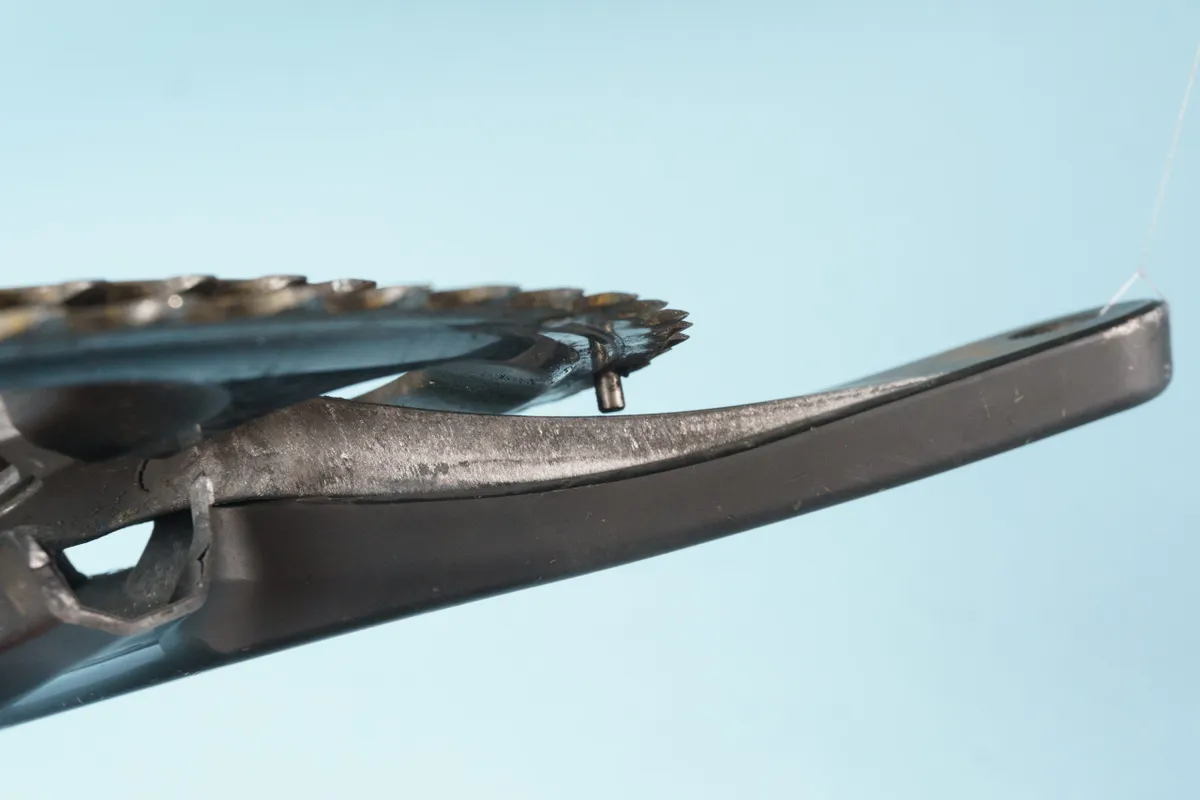
BikeRadar was first made aware of the Hollowtech recall on Thursday morning when it appeared on the United States Consumer Product Safety Commission (CPSC) website. Only cranks sold in the US and Canada fell under this recall.
A call with a Shimano representative confirmed the recall would be extended globally, with a statement due to be published on the Shimano EU site “later that evening”.
Shortly after we published our initial story, the statement appeared on the Shimano EU and US websites.
The US statement included details absent from the CPSC notification, followed by a relatively in-depth FAQ. But the Shimano EU statement was lacking in detail until it was updated at around 9pm yesterday.
The original EU statement merely outlined how to identify affected cranks, concluding abruptly with a note stating “the timing of the inspection and other details will be announced on this website in the near future”.
In the brief window before the EU statement was updated, many riders were left confused as to the scope and nature of the recall.
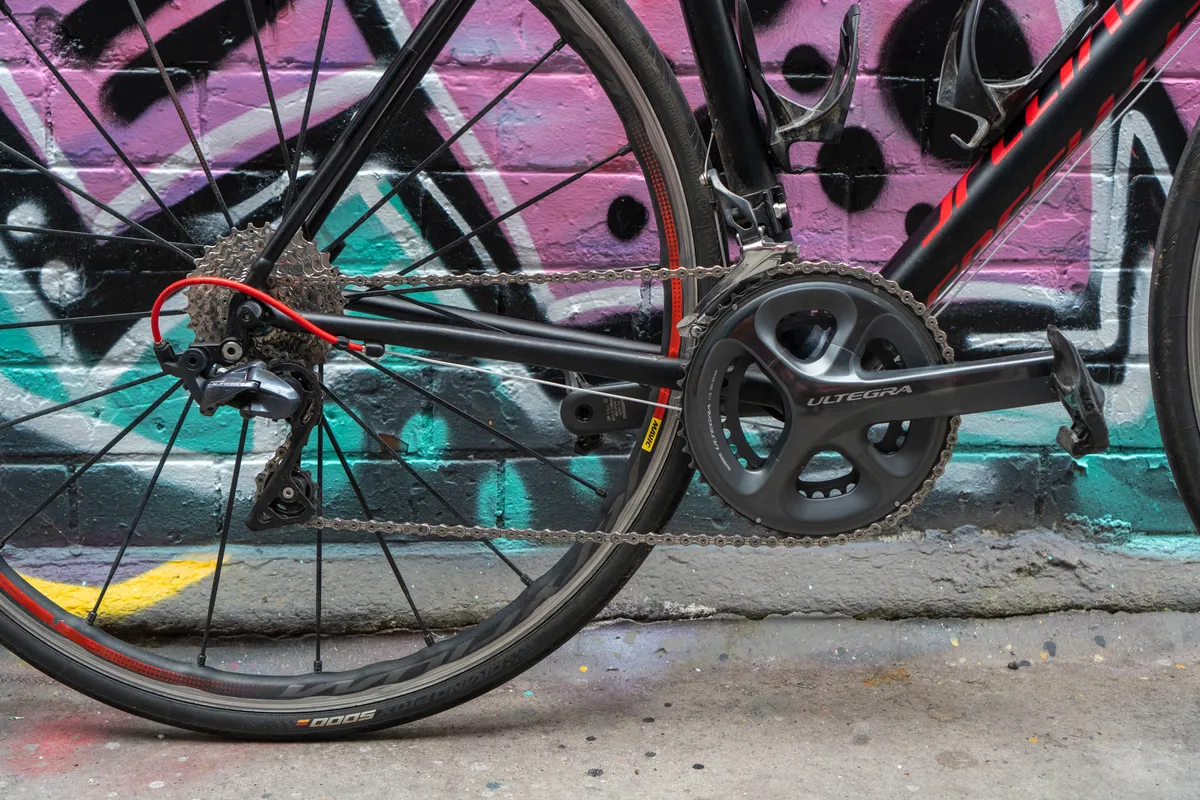
It seems the publishing of the recall on the CPSC site forced Shimano into a scramble to get its own statements out on its official channels, leading to inconsistent messaging across different territories.
Don’t forget, we’re talking about 2.8 million cranksets, manufactured by the world’s biggest bike brand, that could fail – this recall is a big deal, so it’s surprising Shimano did not have robust and unified messaging from the outset.
Questions left unanswered

While the US and EU are now aligned, questions have been left unanswered by both statements. Information disclosed to retailers has also not been shared with the public.
To start, both statements say replacement cranksets will feature “slight cosmetic differences from the original crankset”.
However, training documents shared with retailers outlined the nature of replacement cranks.
Instead of true like-for-like replacements, riders will be provided with cranksets based on current-generation 12-speed cranksets, but adapted to suit 11-speed drivetrains. Unsurprisingly, the existing 11-speed design is no longer in production.
For example, a failed Dura-Ace R9100 crankset will be replaced by a special re-spaced Dura-Ace R9200 crankset (model number FC-09).
Some may welcome this unexpected ‘upgrade’, but Shimano can’t reasonably describe it as a “slight cosmetic change”. The crankset will, in terms of its aesthetic, appear part of a different groupset.
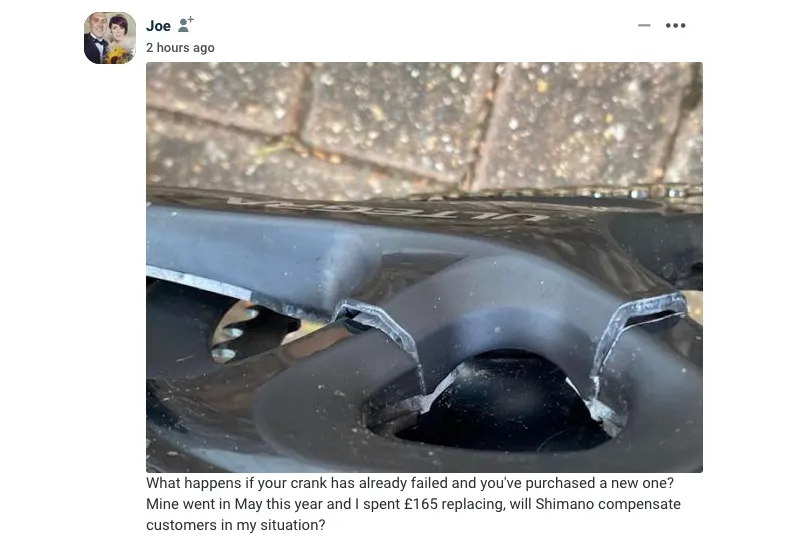
Prior to this recall, cranks that failed out of their original warranty period may not have been replaced. This meant many riders were forced to purchase new cranks.
Neither statement includes details on whether these riders, who have previously replaced cranks due to a failure, would be in line for new cranks or other compensation.
When asked for clarification, a Shimano spokesperson said: “If [a rider still has the] affected crankset… it will be considered as a new case and can be taken to the dealer for inspection. If it [has been discarded], Shimano won’t take any action.”
What is the cause of Shimano’s crankset failures?
Beyond explaining that “bonded crank parts can separate and break”, Shimano remains publicly tight-lipped over the cause(s) of failure.
Back in April 2020, when we originally reported on this issue, a Shimano representative said: “It is difficult to answer your question on patterns of failures because there are so many people globally using our products in different circumstances and in different ways.
“For example, one might assume that climatic conditions (eg weather), a rider’s personal riding style (eg power/weight), or usage conditions (eg a crash) could impact product performance but there is no overall pattern that we have identified to explain why one consumer might have an issue whilst a similar consumer will have a lifetime of riding enjoyment.”
This time around, when asked if Shimano had identified a common cause of the debonding failures, a spokesperson said: “The affected cranksets have certain manufacturing processes in common.
“One of the procedures involved in this process is a bonding technique, which facilitates the fusion of distinct layers within the crank arm.
“Reports received by Shimano indicate that the bonded layers on the crank arm could separate.”
This is merely a reiteration of what we knew already, but any additional information provided by Shimano could provide greater comfort or insight to riders using affected cranks, that are not yet showing signs of potential failure.
The observations of riders who have experienced a failure may be no more than anecdotal, but Shimano would do well to clarify again if there is any pattern to recent failures. More information will only help riders and shops to make informed decisions about their cranks.
Is continuing to ride an acceptable risk?

Shimano says if a crankset passes inspection with no sign of delamination then you can “continue to enjoy your ride”.
However, it cautions that, even if a crank passes initial inspection, riders should “pay attention to changes in the sound and feel of how your bike is riding”, warning that “changes could indicate wear out, breakage, or need for adjustment to some part of your bike”.
Responding to BikeRadar’s original article on the recall, some readers have argued that all cranksets should be replaced.
A commenter on our original story remarked that, although their Ultegra R8000 crankset “shows no signs of degradation yet, I think Shimano should replace it as a matter of principle.
“Waiting until an incident occurs and someone suffers an injury is far too late in my opinion,” the comment continued.
Again, outlining why the cranksets are failing could help reassure concerned riders.
In any case, Shimano has clearly deemed this potential risk to be low enough to not require a full-blown recall and replacement of every crankset.
And it is likely the case that most of those with affected cranks will continue to ride trouble-free for years – Shimano says the incidence rate of failures is “proportionally very low (less than 1 per cent)”.
Still, it would be wise to heed Shimano’s advice and check your cranks regularly.
What about third-party power meter users?
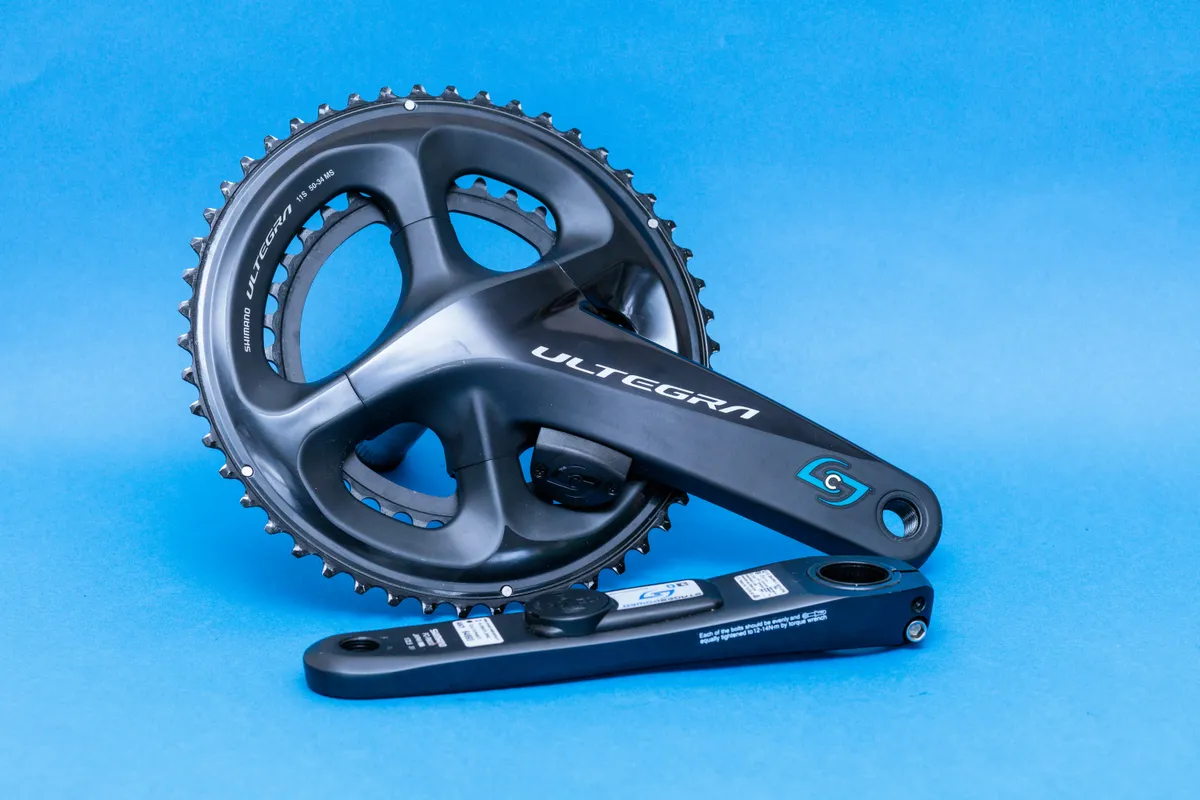
Riders with third-party power meters installed on their Shimano cranksets are facing a more complicated path towards a resolution.
Shimano says power-meter equipped cranksets that fail inspection will be “replaced free of charge without the third-party power meter attached”.
Riders will then be issued with a rebate of $300 to $325 ($400 to $430 CAD) for single-sided power meters. Dual-sided power meter owners will receive a rebate of $500 ($650 CAD). Details are to be announced for the UK and other territories.
A couple of hundred dollars is better than nothing, but even $500 won’t come close to the cost of a high-end, dual-sided power meter. A Stages Power LR Shimano Ultegra R8000 power meter would set you back $789 at RRP, for example.
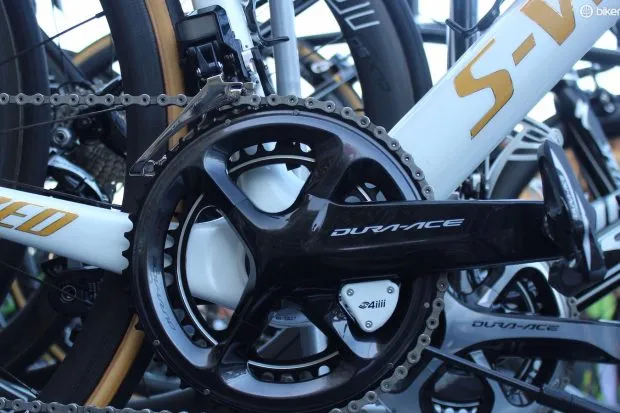
Speaking to BikeRadar, 4iiii says it “is aware of the recall and is working closely with Shimano to keep our riders safe and their cycling uninterrupted”.
Riders will have the choice of having a new power meter fitted to their replacement cranks or, if a quicker solution is required, 4iiii will send a comparable factory-second (cranks with minor manufacturing faults) power meter from its Precision 3 NDS or Precision Pro Dual range.
4iiii believes the recall will impact “less than 1 per cent” of the cranks it has manufactured, but we’ll have to wait and see what impact the recall has on other third-party suppliers and what measures they will put in place.
Shops and retailers will bear the brunt of this recall
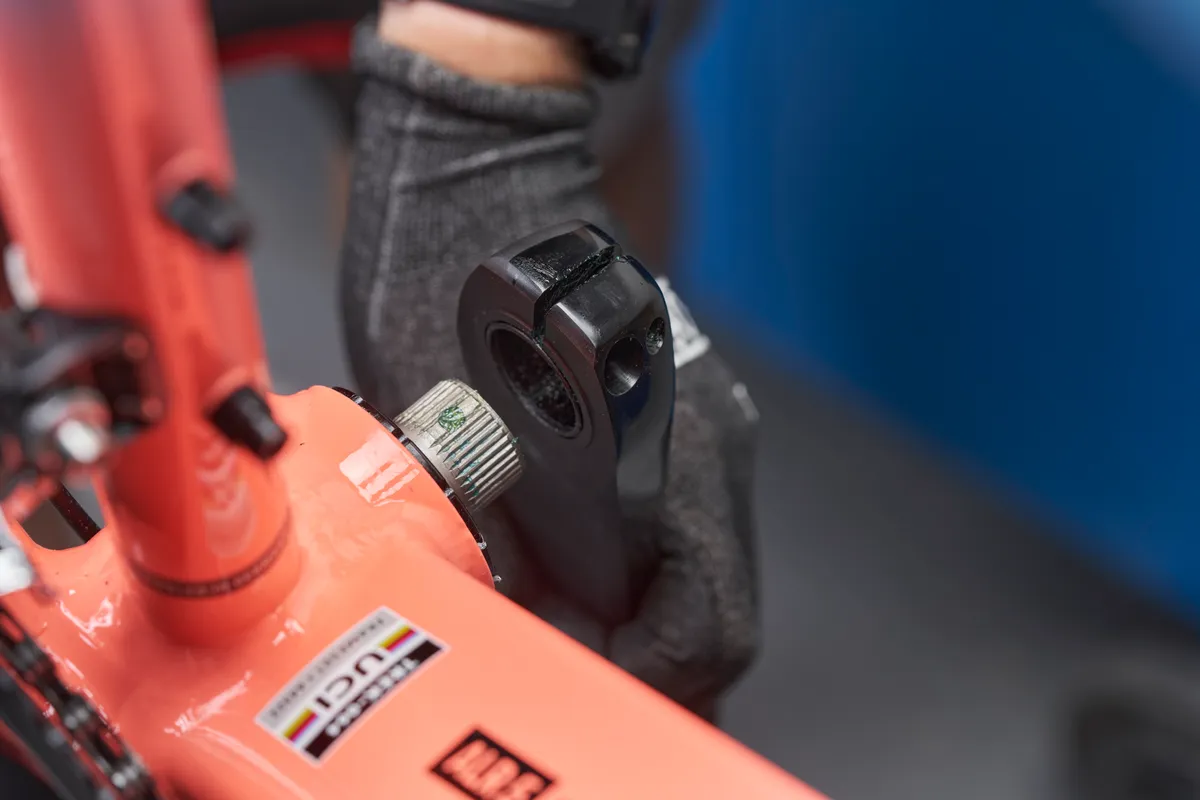
The recall will have a massive impact on retailers.
Details are yet to be released for other territories, but in the US, riders with affected cranks will be invited to take their bike to participating retailers for inspection from 1 October.
Participating shops will be offered a $75 (or $100 CAD) rebate for each inspection after approval of Shimano's internal audit of the submitted claims and cranks.
Tommy Barse, owner of Cutlass Velo in Baltimore, Mayland, believes Shimano is asking too much of shops for the $75 fee.
“An inspection involves greeting the customer, getting their information, removing and cleaning the cranks for inspection, producing documentation and photographs and… submitting information through a portal on the B2B site with nine fields,” says Barse.
He believes “$75 is a slap in the face”.

In addition to dealing with storage and logistics, Barse also points out it will be shops that bear the brunt of ire from customers: “Shops will have to try to save face in addition to customers being upset about a product that was sold to them with, essentially, knowledge within the industry that these crank arms were prone to issues,” he says.
The situation may become more difficult for bike shops if replacement cranksets are delayed or unavailable, and Shimano has acknowledged this is likely to happen.
While Shimano promises “to do our best to expedite the replacement crankset”, it warns that the huge number of crankset options means it “may not have your crankset in stock”.
“If a replacement crankset is temporarily unavailable, Shimano will work with the retailer to communicate and confirm when the replacement is ready,” the brand says.
Shimano has also confirmed that, due to changes in the production of certain chainring sizes and crank lengths, not all riders will be able to get a like-for-like replacement.
For example, 180mm Dura-Ace cranks will be replaced with 177.5mm cranks. Chainring options will also be limited – riders with a 53/39t Ultegra crankset will get a 52/36t combination as a replacement, while 52/38t Dura-Ace users will also get a 52/36t, and existing 55/42t, 54/42t and 53/39t riders will get a 54/40t crankset.
Bike shops are still licking their wounds from the component shortages of the Covid years. This recall has the potential to erode the goodwill of bike shops and customers if it is significantly disrupted or poorly managed.
It’s worth pointing out that not all retailers are obligated to participate in the recall programme, but do shops really have a choice?
For many like Barse, it will be a decision between sucking up a possibly loss-making job or taking a stand and potentially driving loyal customers away to another shop.
Nobody wins, except this Instagram account

Barse added that, while the number of cranks that have failed so far is low compared to the number sold, “it was common enough to inspire a social media account”.
The social media account in question is the infamous @thanksshimano, which might just be the only ‘winner’ in this whole situation.
The account has frequently posted photos of broken Shimano cranks since 2018.
After five years of anonymity, Braden Govoni revealed himself as the admin of the account on the day of the recall. Govoni is a veteran of the cycling industry and co-owns the bike shop Outpost Richmond, and the steel bike brand, Ride Endpoint.
Speaking to BikeRadar, Govoni said he was inspired to start the account primarily as “a joke, but driven by my frustration as a mechanic and shop owner at what I viewed as poor consideration for the rider and mechanic on the part of Shimano.”
“I’ve always thought Shimano viewed bike brands as their priority, whereas SRAM and Campagnolo view the rider as the customer.
“As a result, [Shimano’s] baseline approach to warranty and customer care are vastly different,” he says.
Govoni struck a more cautious note when asked whether he believed the recall was a win for riders, as he described it in his post on the day of the recall: “I’d say it’s hopefully the start of a win.
“The [recall] seems insufficient but hopefully it will expand as it’s rolled out.”
He also expressed concern that “people who long since threw away broken cranks” will be left out of pocket.
Many of @thanksshimano’s followers have praised Govoni, but Govoni was reserved when asked if he felt he had played a part in bringing the issue to light. “Did I play a role? Maybe some,” he replied. “Various articles cited this account when the story first started breaking in the mainstream cycling press.
“I have heard accounts of shops mentioning this account to push warranty claims through too.”
Regardless of whether pressure from accounts like Govoni’s helped play a part, the long-expected Shimano Hollowtech recall is finally here.
This could prove to be one of the biggest product recalls in cycling, both in sheer numbers and the impact it will have on the industry.
No matter how smoothly the process goes from here, the waves will be felt at Shimano HQ, in bike shops and by riders for years to come.
